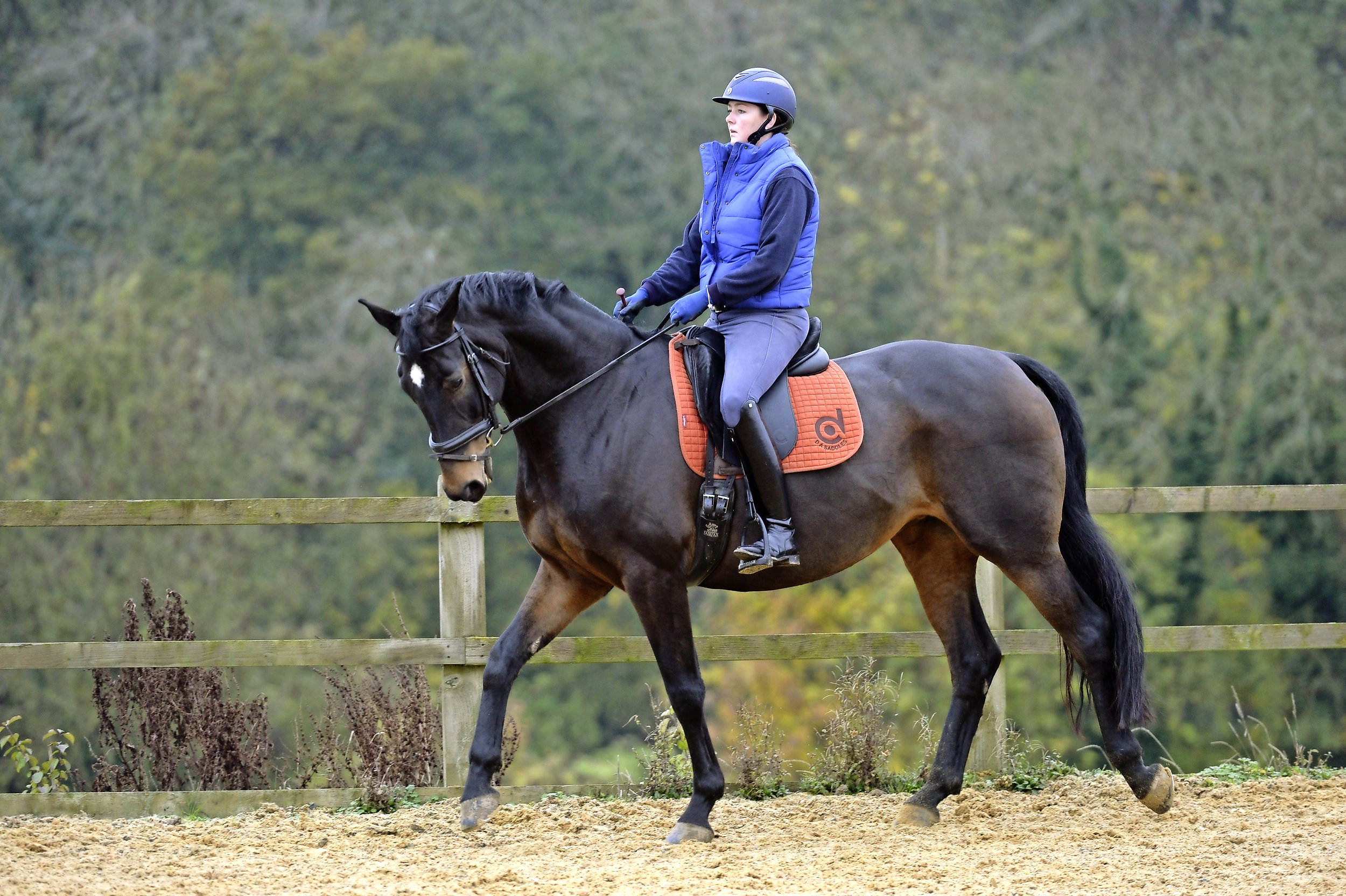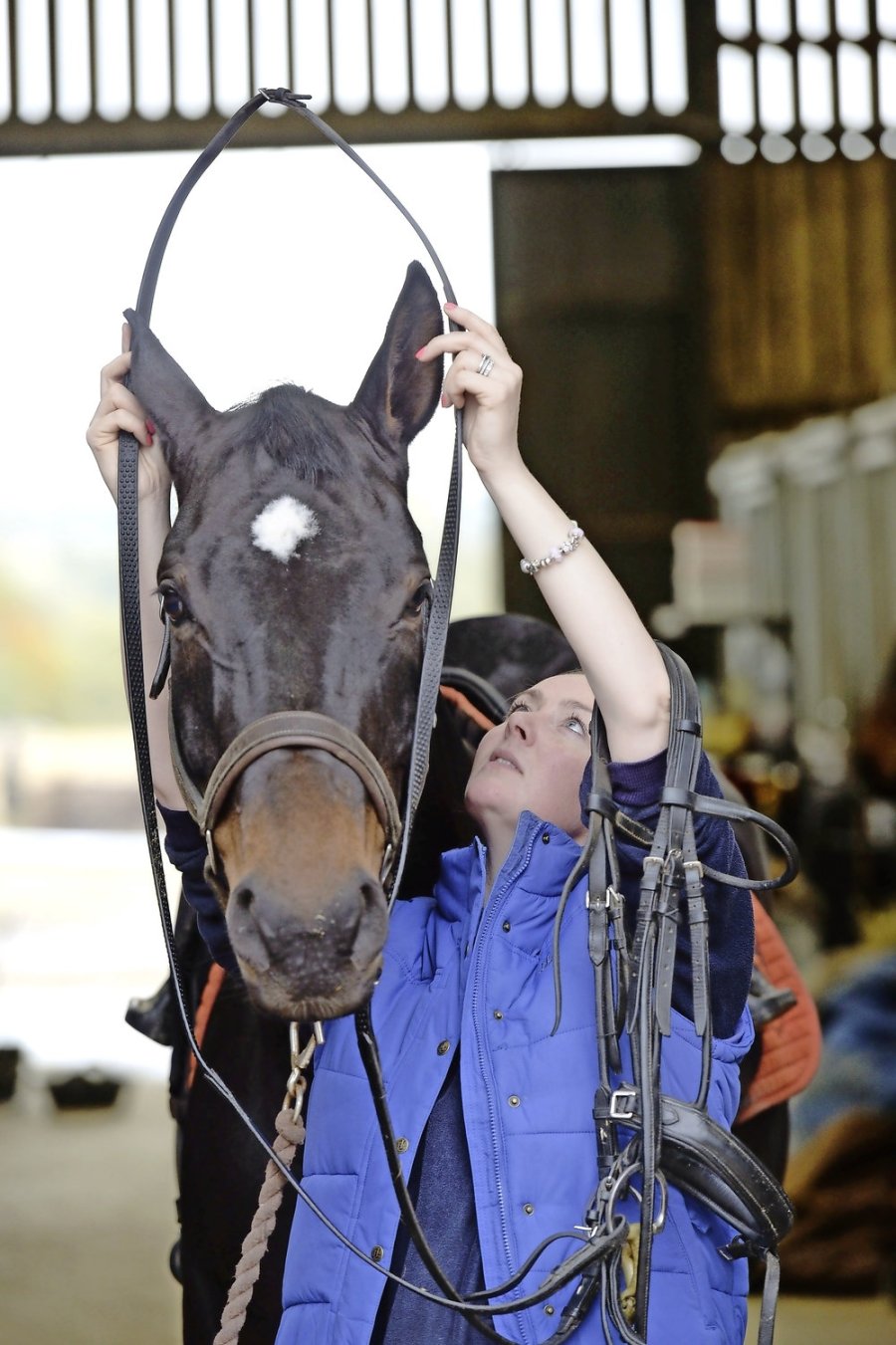As athletes both you and your horse need to be correctly warmed up before any demanding work. Soon daylight hours will start to dwindle and your time in the saddle will be at its premium. As a result it can be tempting to cut your warm-up short but skimp on this phase of your schooling session at your peril! Not warming up your horse’s muscles correctly makes them more prone to injury if you ask too much of him.
Check out these six simple tips, from dressage coach Julie Frizzell (www.dressagecoaching.co.uk), to ensure you and your horse stay fit and healthy through the months ahead.
1. Before you get on board
Grooming and tacking up will help kick start your own warm-up by delivering vital blood flow to your muscles. You can also do some more specific stretches just before you get on board. Simply lift your arms above your head, stretch tall, and do waist twists slowly left and right. Lunges forward and back and side to side (i.e. stepping forward and lunging, then stepping to the side and lowering) are great ways to understand how tight your hamstrings and inner thigh muscles and hip flexors. Also try crossing your arms infront of your body and rotating your torso towards the crossing hand, and then reverse. For your horse, using a magnetic rug will help stimulate circulation, or a massage therapy pad used before work will warm up his back muscles before you get on board.
2. Get his muscles working
The first part of your warm-up encourages relaxation as well as getting your horse’s muscles working. Keep this early work nice and simple for both of you, spending the first five minutes in walk on a light contact riding large circles and frequent changes of rein. Check his walk has a positive and regular rhythm as you ride each of the movements. During this phase and if it’s safe to do so slip your feet out of your stirrups and let your legs hang down to stretch out your glutes, hip flexors, hamstrings and calf muscles.
3. Encourage suppleness
Still in walk ride some smaller circles asking for a little more flexion and bend. Introduce movements which will keep your horse’s attention, as well as working on his suppleness and engagement. Try simple lateral work such as leg-yield on a straight line and shoulder-fore, making sure you keep the angles shallow.
4. Make it easy for him
Now you can up the pace. But make sure the work you ask your horse to do is easy for him. Difficult movements will only cause his muscles to tighten when what you’re trying to achieve is softness and relaxation. If he finds canter easier than trot move straight onto canter, and come back to trot later in your schooling. Or if his trot is his stronger pace continue your warm-up with some trot work.
5. Check he’s listening
You can never ride too many transitions. These will check that your horse is listening to you and being obedient to your aids. As you ride think, can I keep my horse’s ear tips level during the transition? This will help you gauge whether your transitions are correct and coming from behind, or if your horse is lifting himself rather than pushing from his hindlegs.

Check that your horse is listening to you and being obedient to your aids by riding plenty of transitions
6. Encourage straightness
The final part of your warm-up targets straightness and whether you have control of his shoulders. Try riding some half circles, pulled apart by straight lines – a bit like the shape of a race track. Check you can you keep true bend from poll to tail on your half circles, and then straighten your horse up so his shoulders remain on two tracks for the straight lines. You’ll need to focus on riding this exercise from your legs to stay in control. The temptation could be to use too much hand, but this will result in a crooked horse.










